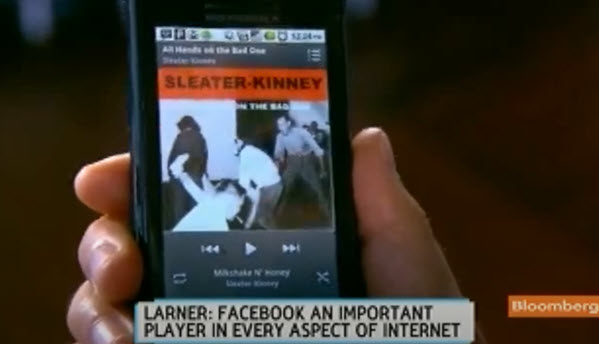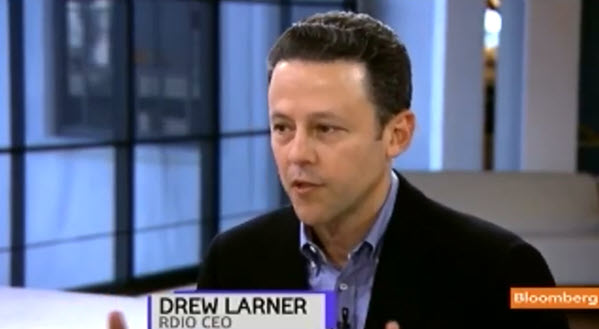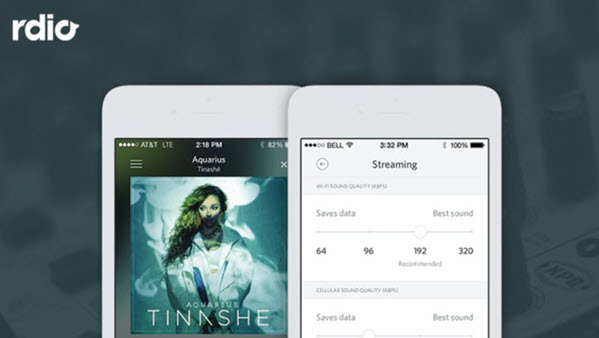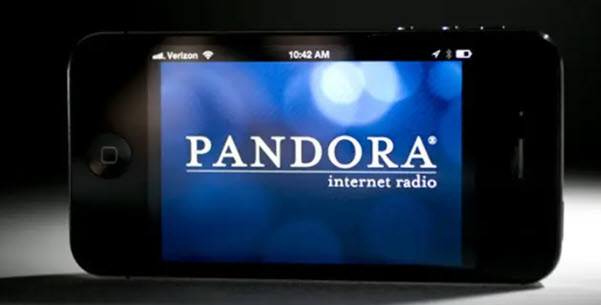Rdio was a San Francisco-based online music streaming service founded by the former Skype co-creator Janus Friis, and Niklas Zennström in 2008, and its official site was launched in 2010. It was one of those modern music streaming services in the US market, and it offers a subscription-based model from the very beginning. In hindsight, it become problematic at the rising Spotify, which adopted a free strategy to win a large portion of users.
After gaining strong momentum in the first few years, things gradually went south for Rdio. It was acquired by Pandora and filed for bankruptcy on November 16, 2015.
Company: Rdio™
Official Website: www.rdio.com
Founded: August, 2008 (Launched in August 3, 2010)
Founders and Key People: Janus Friis, Niklas Zennström, Carter Adamson (co-founder), Drew Larner (CEO during 2008-2014) Anthony Bay (CEO during 2014-2015)
Headquartered in: San Francisco
Acquired by: Pandora Media, Inc. in 2015
Discontinued: December 22, 2015
Was available on: Web, OS X, Windows, Roku, iOS, Android, BlackBerry, Windows Phone
The History of Rdio
Rdio was founded in August 2008, and officially launched on August 3, 2010. Prior to its launch, the founders revealed the details of this online music streaming service in June 3, 2010. Offering a highly social experience and seamless mobile-PC integration was the mission at the very beginning of Rdio.
Upon its launching, Rdio already secured its music library with content from famous music labels, such as EMI Music, Sony Music Entertainment, Universal Music Group and Warner Music Group, and major indie aggregators, Finetunes, IODA, IRIS, INgrooves, and The Orchard, to name a few. Rdio also established its profiles in leading music publications and influencers, such as The FADER, KCRW Radio, Pitchfork, Spin Magazine, and XLR8R Magazine.
On February 3, 2011, Rdio received 17.5 million in investment from new and existing investors, including Mangrove Capital Partners that joined recently. Warner Bros. Records Chairman, Grammy-nominated producer Rob Cavallo joined the Rdio board.

on August 4, 2011, Rdio rolled out the iPad app with a growing music library of more than 10 million songs. Till then, the available platforms were iOS, Android, Blackberry, and Web service.
On September 22, 2011, Rdio added the support to share music on Facebook. Acknowledging the social DNA of Facebook, Drew Larner, the CEO of Rdio, stressed Rdio's role as a social music discovery service.

On October 6, 2011, Rdio announced an ads-free on-demand music streaming service that's free of charge. The free tier allowed users to access a catalog of more than 12 million songs at that time. Users can sign up via the web or desktop apps (both Windows and Mac) without credit card information.
On October 2, 2012, Rdio announced a monetization method that rewards artists with $10 for each new subscriber they attract to Rdio through social sharing, such as from Twitter, Facebook, or other online platforms.
On April 2, 2013, Rdio introduced Vdio, a pay-per-view streaming service that focused on new movie and TV releases from major studios. Rdio subscribers were given a credit of $25 to use on Vdio. This short-lived service was shut down on December 27, 2013.

On June 7, 2013, CEO Drew Larner disclosed his plan to step down. He told Bloomberg that while he was good at "making the deals", he was then planning to search for a new CEO with a better marketing skill set, as the next stage of the company is about building an enormous user and subscription base.
In September 2013, Rdio launched a free mobile Radio service, "Stations". Anyone can enjoy an unlimited number of ablum, artist, album, genre, and track-based stations without a subscription. The service is an addition to the "You FM" feature released in August 2013 for personalized FM.
On May 19, 2014, Rdio announced in its press release that the music streaming service has expanded to nine more European and Asian countries, bringing its total reach to 60 territories worldwide.

On October 16, 2014, Rdio upgraded its entire music library to AAC audio files, which offer better sound quality than MP3s. From then on, Rdio users can adjust the sound quality with four different options. That move reduced data consumption by a third, making it beneficial for many markets outside of the US.
On January 15, 2015, Rdio finally expanded to the Indian market. It offered users access to a large catalog of over 32 million songs in 43 languages from global, regional and local labels. Users can choose from hundreds of curated stations or create their own personalized stations.
On January 22, 2015, Rdio expanded its music streaming services to 24 new international markets, including seven regions in the Caribbean, Central America, and Asia Pacific and more through a partnership with mobile phone network provider Digicel.
On May 14, 2015, Rdio launched a $3.99 monthly subscription service called Rdio Select for budget streaming, which offers ad-free streaming radio and the ability to select up to 25 new songs a day on demand. During the time when online music streaming service is normalized to about $10/month, this move from Rdio showed their effort to carve out a path in the already ruthless market. Subscribers can keep 25 songs at a time and replace them with 25 new ones every day. The service also includes a completely personalized station called You FM™, and it is available in six countries and works on iOS and Android phones and other connected devices. A 60-day free trial is available for a limited time.
Rdio's efforts to increase its user base globally are demonstrated in its partnership with TELUS (a Canadian telecommunication company) in 2011, Dhingana Dhingana (an Indian music service) in 2014, and Grupo Bandeirantes (a Brazilian media company) in 2014. This music streaming company also works with major music publications and influencers, such as TuneCore and CD Baby, AXS Ticketing, and Livenation and its Country Music Festivals. Additionally, Rdio also explored the possibilities of working with various platforms, such as the cross-promotion with Grammy, Shazam and Chromecast integration, as well as in-car music streaming on Jaguar and Land Rover.
Seeking Out Partnerships to Expand the Business
Ever since its birth, Rdio had never stopped seeking out partnerships and cooperation. In a highly competitive and ruthless business – online music streaming, Rdio needed to connect with new audiences in different regions and markets.
July 7, 2011, Rdio partnered with TELUS, a leading telecommunication company in Canada, to offer the $10/month subscription service using the existing TELUS account. This partnership made Rdio the first music streaming service with social music discovery features in Canada.
March 27, 2012 - Rdio partnered with Team Coco (headed by Conan O'Brien) to syndicate the weekly Mixtape Series. Together, they offered curated music playlists from shows such as TBS' Conan, Andy Richter, and Jimmy Vivino shows. That's an expansion of the influencers such as record labels Sub Pop and 4AD Records, music media outlets SPIN and Paste, and brands Free People and InCase.
August 16, 2012 - Rdio joined forces with TuneCore and CD Baby, in an effort to support independent music artists. Drew Larner regarded independent music as a vital part of Rdio, and he was optimistic about the alliance, in terms of offering new chances for independent music artists to reach out to fans globally.
July 23, 2013 - Rdio sponsored the Country Music Festivals of Livenation.com. Acknowledging the live music audience as a natural fit for the steaming music, Drew Larner stressed the importance to engage more music fans before, during and after the festivals.
September 15, 2013 - Rdio announced its partnership with Cumulus Media, a broadcast radio company in US, in an attempt to narrow the gap between itself and Spotify. With this alliance, Rdio got a major partner with 525 stations in 110 US cities and promotion on Cumulus stations. In exchange, Cumulus secured an undisclosed stake in Rdio's parent company, Pulser Media.
January 23, 2014 - Rdio features the Grammy Awards with a dedicated profile and playlists to include all the nominees in the event. Alternatively, the Grammys app leveraged Rdio's API to access an extensive library of over 20 million songs, so that fans can enjoy the music featured at the awards show.

March 14, 2014 - Rdio acquired Dhingana, an Indian music service that shut down in February. The acquisition is a gesture of Rdio's entering into the Indian streaming market. Dhingana had 9 million monthly active users globally, and its founders, Snehal and Swapnil Shinde, will join Rdio's executive team.
March 28, 2014 - Rdio deepened its partnership with Shazam, the Music ID service. New features allowed users to add any song from Shazam to their Rdio playlist, rather than just the ones they have "Shazamed". The move will give customers greater playlist options, according to Rdio.
March 31, 2014 - Chromecast support was added to Rdio for TV music streaming. Users could wirelessly cast from their iPhones, iPads, Android phones, and Chrome browsers to TV or HDMI display. The existing remote feature of Rdio also enabled users to control playback on the Chromecast from anywhere they are logged into their Rdio account.
April 22, 2014 - Rdio teamed up with Brazilian media company, Grupo Bandeirantes to increase the latter's online music presence. In return, Rdio was integrated into Grupo Bandeirantes' infrastructures such as Terrestrial and cable television stations, radio stations, and online news portals. Antonino Ruggiero, VP for Business Subscription of Grupo Bandeirantes, said the partnership is a major innovation in music distribution in Brazil. He also regards online music streaming as the new reality that will shape how people listen to music in the near future.
January 6, 2015 - Rdio added the in-car integration via Bosch mySPIN platform, making it the first in-car on-demand music streaming service on Jaguar and Land Rover. The partnerships also involve collaborations with DTS, LG Electronics, and Hisense.
February 11, 2015 - Rdio declared its partnership with AXS Ticketing, a joint venture of AEG. Together, they will provide free trial subscriptions of Rdio Unlimited. Personalized Rdio accounts will be created based on previous concert buys, making the listening experience more immersive and engaging for fans, and building closer connections between them and their favorite artists.
The Receptions of Rdio
Rdio was best known for its social networking features. Today we have Spotify and Apple Music with various kinds of recommendation algorithms to surface songs for users. At that time, Rdio was pioneering music streaming services in terms of social recommendation and sharing. Or, as how Chris Becherer, Rdio's head of product defined it, Rdio was "Social from the ground up…The founding premise was the best music recommendations come from the people you know".
It is also noted by Nathan Ingraham in 2015, recalling his early experience with Rdio, the service was "Smart enough to show me what was trending among the people I cared about".
Besides showing users the trending music their friends are into, Rdio also made music recommendations based on those data. It also had a "heavy rotation" feature to bump up albums that were popular.
The sleek design of the Interface and UX was praised by many leading publications. As observed by Casey Newton, some of Rdio's designs influenced plenty of apps not only in the music category. For instance, the translucent panes and gradients in iOS7, and the blurred album art in the background as UX design in other streaming apps are traces of Rdio.
On October 14, 2013, CNNMoney picked Rdio as the Best In Tech for the streaming music category.
CNN praised Rdio's social features – one the separate Rdio from its competitors by allowing users to discover what their friends are listening to, customizable online library, and visually cleaner and easier layout – one that presents user's collections as a highly visual array of album thumbnails that can be sorted in a variety of manners.
On August 1, 2014, Rdio was included in TIME's "50 Best Websites 2014" ranking. TIME's editor was in favor of its large collection of songs and the sleek design. They also highlight the "You FM" station in Rdio, which helps to personalize users' listening experience and plays music based on their past listening behavior.
Rdio Underwent Internal Turmoil
The year 2013 witnessed major internal reorganization. In June 2013, Drew Learner, the CEO of Rdio, announced that he was stepping down. In an interview with the Bloomberg, Learner explained that he was in search of a new CEO with a different skill set to scale up the service. Or in particular, the ability to build "an enormous user and subscription base".
Although there was tremendous momentum in 2012, and the company had grown its user base 800% since the end of 2012, in the highly competitive industry as such, it is still far from enough. As observed by Nathan Olivarez-Giles, Drew Learner's eventual departure was announced right after Google published its "Google Play" Music streaming service across all platforms. At that time, Apple was also about to introduce iTunes Radio in WWDC 2013.
A month after Larner's announcement, Malthe Sigurdsson, head of product and key person in Rdio's innovative design, quite Rdio. His position was then replaced by Anthony Bay, former Amazon executive.
As its ongoing war with Spotify went intense, in November 2013, Rdio told Techcrunch that they were laying off a third of its workforce, in an attempt to "improve its cost structure and ensure a scalable business model for the long-term". Rdio also struggled among the free radio services offered by iTunes Radio and Pandora.
Pandora Acquired Rdio
Shadowed by Spotify and other growing music streaming services, cracks have appeared in Rdio's business. The situation was especially severe as Rdio was less good at acquiring users and marketing for its services, when compared to other giants in the industry. According to The Verge, Rdio even didn't have had a dedicated in-house marketing chief. The role was held temporarily by West, a San Francisco-based agency; and then shifted to Mark Ruxin, owner of Tastemaker which was bought by Rdio, for a few months before he left the company.

On November 16, 2015, Pandora announced its acquisition of Rdio for $75 million, with an aim to expand beyond its roots as an Internet radio company into a definitive portal of music sources.
According to the Press Release from Pandora, The deal between Pandora and Rdio will only happen if Rdio files for protection in the United States Bankruptcy Court for the Northern District of California and gets approval from the court. Pandora is not buying the whole operating business of Rdio, but only some of "technology and intellectual property from Rdio", with some members of Rdio's team transferred to Pandora.
What Then Happened to Rdio

In line with the announcement from Pandora, Rdio said in its blog that the Rdio's streaming service will not come to a halt immediately, and that the Rdio account and services would continue unchanged for the users. They would be winding down the service in all markets in the coming weeks.
On December 22, 2015, the deal closed after the bankruptcy was declared, and the Rdio service was discontinued.







